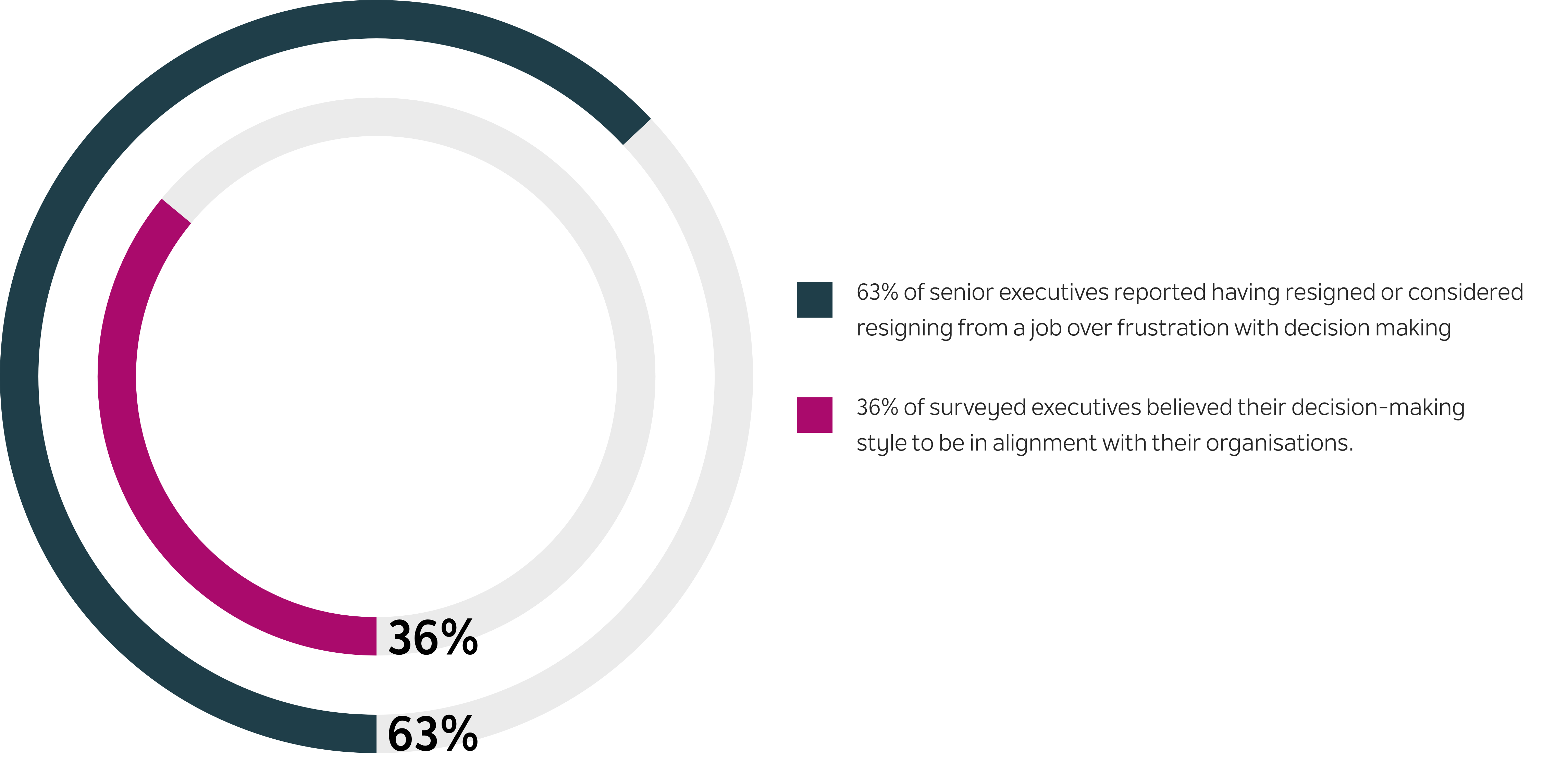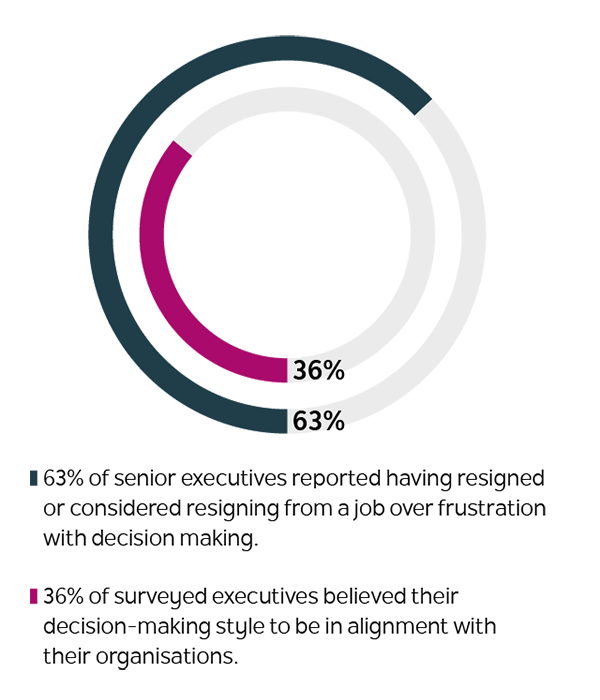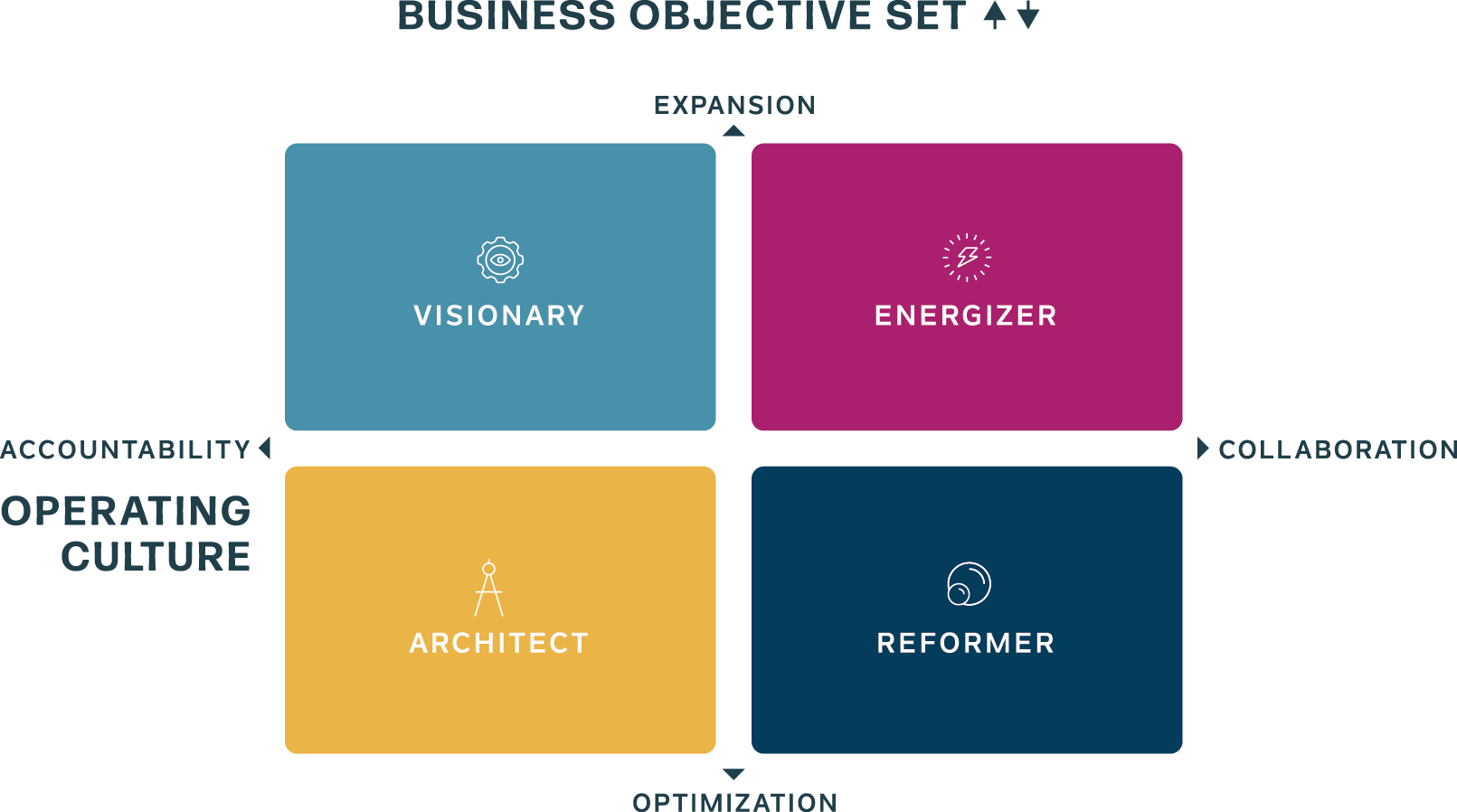Our framework’s first axis (informed by organisational theory) is the “business objective set”, which describes a company’s intent or a candidate's problem solving inclination. On one end is “expansion”: focus on category creation, breakthrough innovation, and new market entry, with value derived from new vs. existing sources and top-line or share growth often prioritised over bottom-line performance.
The other end of the spectrum is “optimisation”: focus on productivity, consistency, quality, and costs, with value derived from improvements along existing source lines and the bottom line top of mind.
Organisational movement on this spectrum is particularly interesting because those companies can improve their success likelihood with the right executive hire. According to Noah Askin, Assistant Professor of Organisation and Management at the University of California at Irvine’s Merage School of Business, these companies (whether a maturing, “expansion” to “optimisation” start-up or an innovation-hungry, “optimisation” to “expansion” enterprise) require a candidate who can "signal both their conformity and their iconoclast nature."







